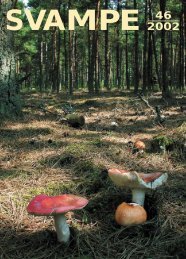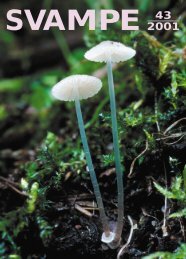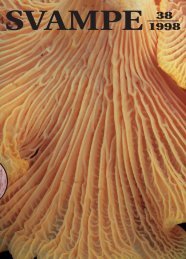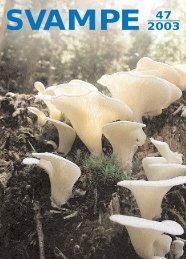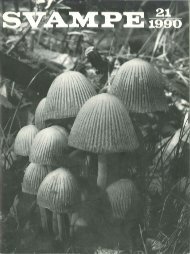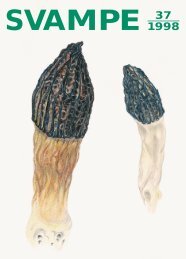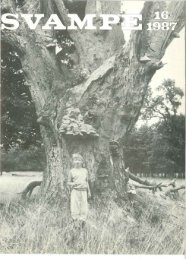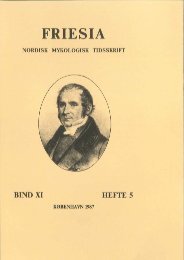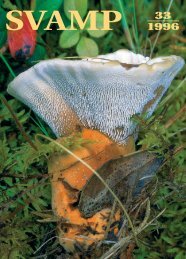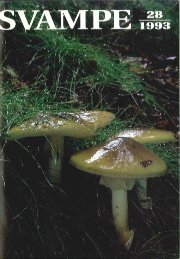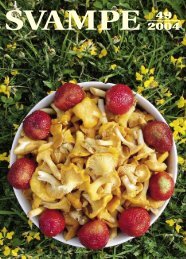Friesia X, 4-5
Friesia X, 4-5
Friesia X, 4-5
Create successful ePaper yourself
Turn your PDF publications into a flip-book with our unique Google optimized e-Paper software.
- 298 -<br />
toxicity on the acid side is due to the presence of free nitrous acid<br />
in the medium (COCHRANE & CONN 1950), which produces destructive<br />
effect on the proteins and aminoacids of fungal cells (LILLY & BAR<br />
NETT 1951). Ammonium compounds (except ammonium nitrate) were<br />
unsatisfactory sources as they supported moderate or poor growth of<br />
the present organism. This may be due to the sharp fall in pH level<br />
which resulted due to the more rapid utilization of anions of the<br />
ammonium nitrogen than cations. With ammonium nitrate, however,<br />
pH values remained within favourable limits.<br />
All the aminoacids (except leucine and histidine) supported good<br />
growth of the fungus. Leucine proved moderate while histidine supported<br />
poor growth. The differences of growth on various aminoacids<br />
may be due to the different degrees of availability of carbon skeleton<br />
of aminoacids for the synthesis of carbohydrates, proteins and fats<br />
(GOTTLIEB & CIFERRI 1956). Present results are in agreement with<br />
those of CHATURVEDI (1964) on Colletotrichum capeici.<br />
The present organism was capable of growing on a wide range of<br />
sulphur compounds, but all the sulphur compounds did not support<br />
equal growth. Absence of growth on zinc sulphate may be related to<br />
the toxic effect of zinc.<br />
In the present investigation there was no definite correlation between<br />
growth and sporulation and practically all grades of sporulation<br />
were recorded with significantly good or poor sources of carbon,<br />
nitrogen and sulphur.<br />
ACKNOWLEDGEMENTS<br />
The senior author is grateful to ICAR, New Delhi, for the award of<br />
fellowship. The authors wish to thank Director of Research at this UniversitY<br />
for research facilities.<br />
REFERENCES<br />
Agnihotri, V. P. (1968): Studies on Golletotrichum capsici. V. Utilization<br />
of organic acids. - Path. Microbiol. 32: 29-34.<br />
Bais, B. S., S. B. Singh & D. V. Singh (1970): Effect of different carbon<br />
and nitrogen compounds on the growth and sporulation of Curvularia<br />
pallescens. - Indian Phytopath. 23: 511-517.<br />
Bonn, W. G. & R. A. Cappellini (1970): Sporulation of Gibberella zeae, III.<br />
Carbon and nitrogen nutrition on growth and marcroconidium<br />
production. - Can. J. Bot. 48 (7): 1335-1337.




